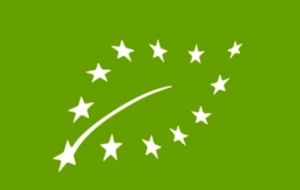MercoPress. South Atlantic News Agency
'Euroleaf', trademark for the strict EU organic farming standards
 The new label is for all pre-packaged organic food products from EU member states.
The new label is for all pre-packaged organic food products from EU member states. The “Euro-leaf” EU organic logo was introduced on 1 July 2010, but in order to help operators adapt to the new rules, and to avoid waste of existing packaging, a 2-year transition period was allowed before it was compulsory on all products.
The new label is for all pre-packaged organic food products produced by EU member states. The visual field of the logo should also show the code number of the control body and the place of farming of the agricultural raw materials.
A recent EuroBarometer report on ”European Attitude towards Food Security, Food Quality and the Countryside', to be published shortly, includes information on the EU organic logo and provides the encouraging indication that, since its introduction in July 2010, the logo has already gained recognition among a quarter (24%) of EU citizens.
“Our hope is that the EU logo can further develop into a widely recognised symbol of organic food production across the EU, providing consumers with confidence that the goods are produced in-line with the strict EU organic farming standards”, according to EU Commissioner for Agriculture & Rural Development Dacian Cioloş.
The idea of fostering the organic farming sector by introducing a compulsory EU organic logo was backed by Member States in 2007. In order to find an original design for this logo, the Commission organised a competition in 2009 in which more than 3,400 Art and Design students took part and a public vote on the best 3 designs in early 2010.
EU consumption of organic products has seen a steady rise in recent years and now accounts for roughly 2% of the EU market.
Production has also increased considerably in the past decade – with roughly 5% of EU agricultural area and more than 2% of farms (more than 200,000 farms) now certified as organic.
In policy terms, this year has seen agreement on rules on organic wine, which enter into force on August 1 (IP/12/113). In February, the EU also signed an organic equivalence agreement with the USA, which will reduce bureaucracy for organic producers in the EU and the USA (IP/12/138).
In May, the Commission presented a report on the existing organic farming regulation, aimed at opening an Inter-institutional debate with all stakeholders and thus creating the opportunity to explore new ways in which to further improve the EU organic policy framework.
The logo will not replace other regional, national, or private logos, but will appear alongside them. (Daily, meat trade news).




Top Comments
Disclaimer & comment rules-

-

Read all comments”The highest shares of organic agricultural land are in the Falkland Islands (35.9 percent), Liechtenstein (27.3 percent) and Austria (19.7 percent).”:
Jul 12th, 2012 - 12:34 am 0http://www.fibl.org/en/themen/themen-statistiken.html
Falkland Islands: Current status of organic farming:
http://www.fibl.org/en/themen/themen-statistiken.html
Falklands working for organic certification with Australian support:
http://www.fibl.org/en/themen/themen-statistiken.html
A World Map of Organic Agriculture (Falklands figure prominently):
http://www.fibl.org/en/themen/themen-statistiken.html
Anything with the “euro” prefix spells huge cost for the EU tax payers and should be scrapped before it starts: Euro-fighter, Eurovision, European Parliment, European Charter of Human rights, Euro Zone....
Jul 12th, 2012 - 02:59 am 0Commenting for this story is now closed.
If you have a Facebook account, become a fan and comment on our Facebook Page!